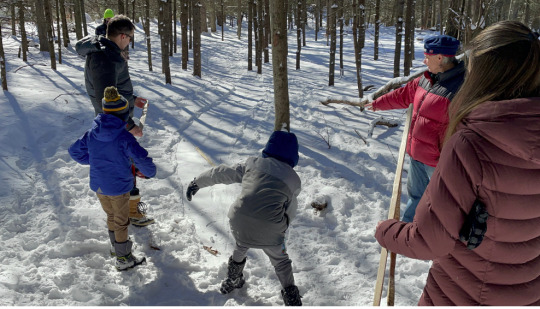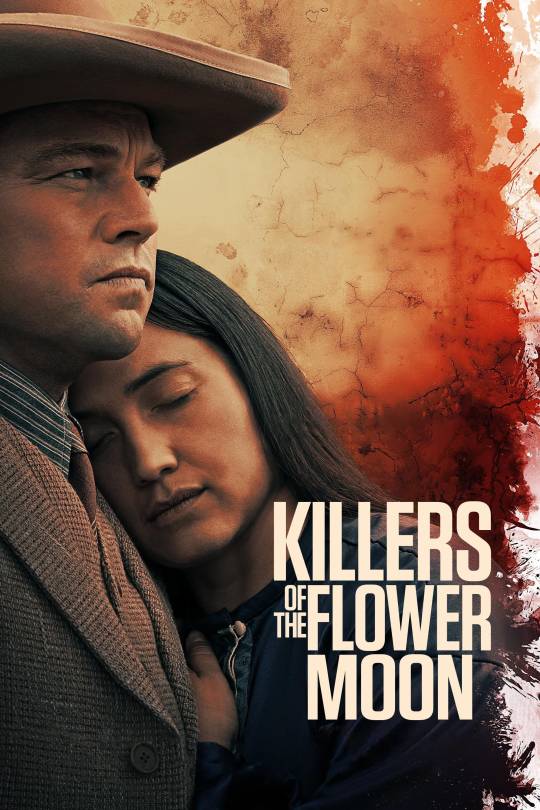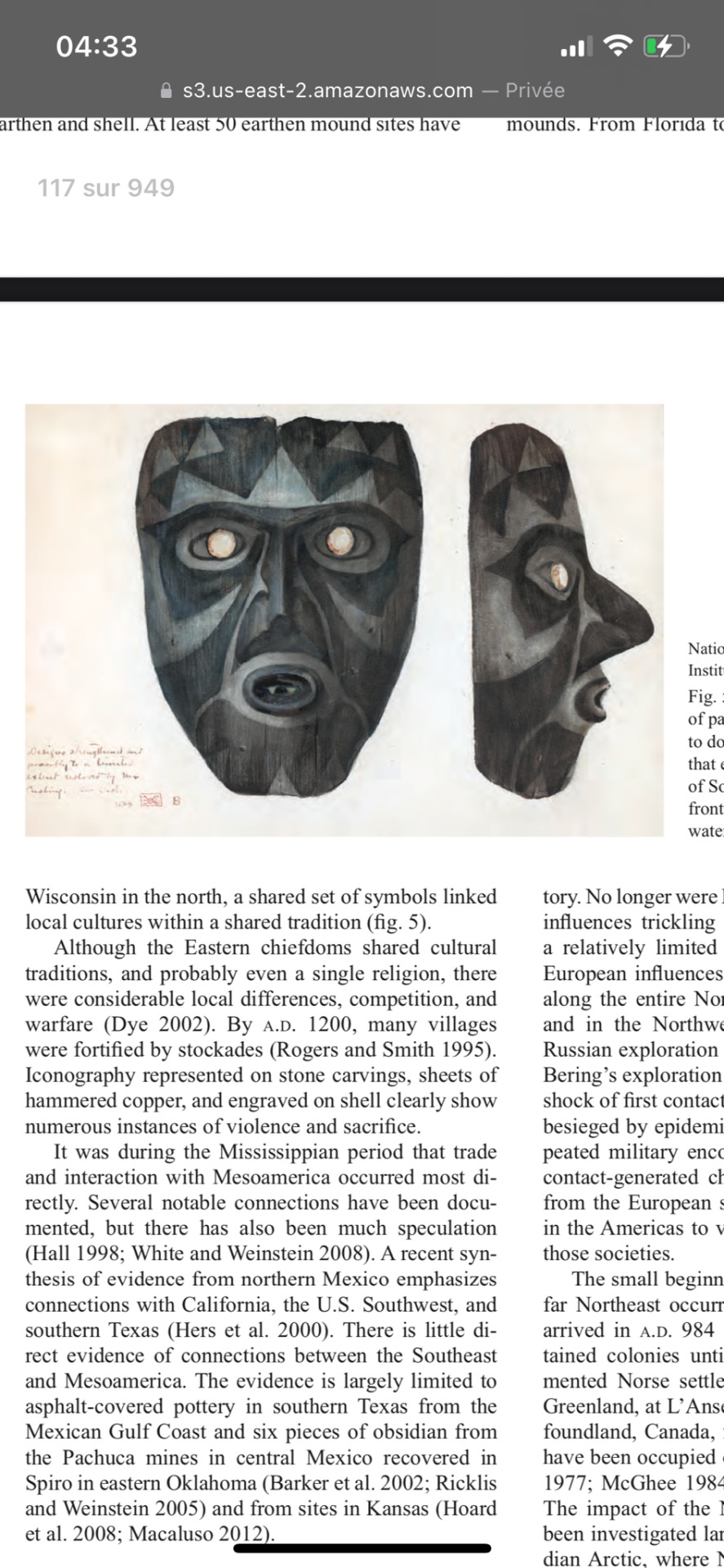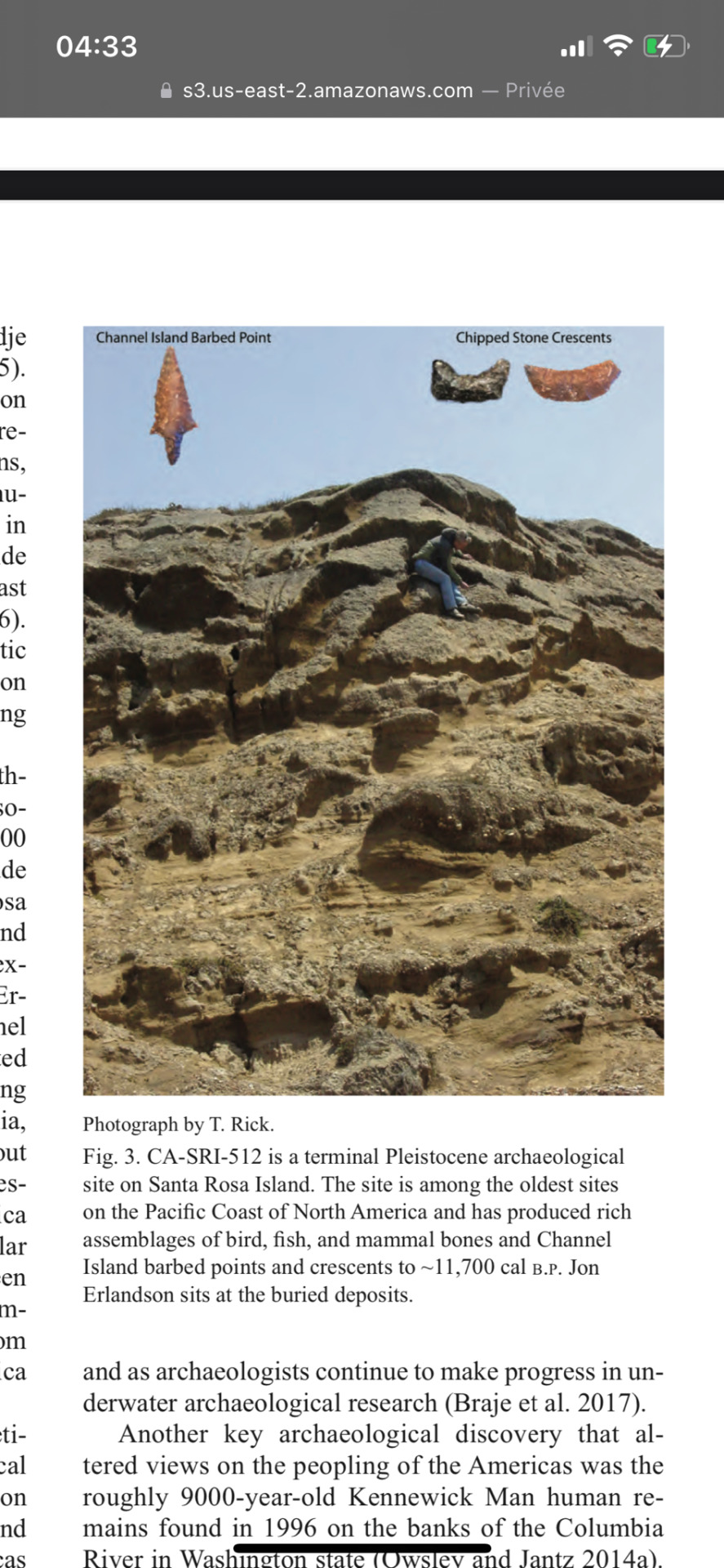#NativeAmericanHistory
Explore tagged Tumblr posts
Text

#digital aritst#digital#digital art#digital arwork#digital portrait#art#digital illustration#meta#digital drawing#artists on tumblr#nativeamerican#indigenous#native#nativepride#firstnations#nativeamericans#nativeamericanart#americanindian#nativeart#natives#navajo#nativeamericanculture#Metaverse#indigenouspeople#nativeamericanhistory#nativeamericanjewelry
2 notes
·
View notes
Text

Image Description: Osage ceremonial pipes (image 1)

Osage War Ceremony: Four Songs of the Xthe’ts’a-ge, Song 3 (La Flesche, pg. 25) (image 2)

Image Description: Osage Peace Ceremony: Opening Ceremony Mon’-shon Wa-thon or Feather Songs, Song 1 (La Flesche, pg. 215)
This document sets out to detail the specific rites and rituals that in sum describe the sacred ceremonies of the people of the Wa-zha’zhe, or the Osage tribe. Part one details the Osage peoples’ Wa-sha’-be A-Thin, or War Ceremony, rituals and songs. Part two details the Osage peoples’ Wa’-wa-thon, or Peace Ceremony, rituals and songs.
After watching the recently released film Killers of the Flower Moon (2023) from the critically acclaimed film director Martin Scorsese, I was inspired to seek out historical records of Osage Nation kept by the U.S. government published around the same time period that the events depicted in the film took place. Given the importance of the Osage Elders' decision to bury their ceremonial pipe at the start of the film, special attention was given to the meaning, purpose and usage of ceremonial pipes while compiling this post.
The author of this report, Francis La Flesche (Omaha), was the first professional Native American ethnologist who worked for the Smithsonian Institution and U.S. Bureau of American Ethnology. Each section is thorough in explaining the various components of sacred rites and La Flesche takes care to center each section of the report around the traditional titles, using verbiage in the Osage language that is translated into English for further comprehension. There is also sheet music to detail both the lyrics and musical composition of various songs, including details as to when specific songs were sung and who within the tribe they were sung by. While this is both an incredibly important resource and piece of recorded history, it is important to note that all authority and autonomy regarding the histories and practices of the Osage people remains within the Osage nation. The only true teaching authority on this subject are the people of the Wa-zha’zhe.
In addition to this combined commentary of purpose and summary of document content, to provide additional cultural context to the images shared here I have included quotes from the bulletin written by La Flesche to provide some additional insight.
Osage ceremonial pipes (image 1)
“The taking up the pipe that lies before you is an act of the gravest responsibility, and he who thus accepts the office of leader should do so with a full knowledge of all that it signifies” (La Flesche, pg.5).
“In May 1911, an Osage Wa’wa’thon pipe (pl. 12, a, b) was secured from Wa-thi’-gthon-in-ge, perhaps the only one in existence. It was, according to Wa-thi’-gthon-in-ge, ceremonially made for Hin-sha’-ton-a or Wa-zha’zhe Wa-da-in-ga at a time when the Osage used to receive annuities of only $3 each from the Government, a period from which the Osage calculate time. This was before 1890” (La Flesche, pg. 253).
“Wa’wa’thon is the term applied by the Osage to the rite incorrectly spoken of by some writers as “the Calumet dance,” or “the Pipe dance.” The meaning of the Osage term is practically the same as that used by the Omaha (Wa’-wan), which is, to sing to or for some one. It is true that there are certain rhythmic movements like dancing in a part of the ceremony, but that does not seem to have been regarded as of sufficient importance to warrant the use of the term dance as a name for the rite. The ceremonies of this rite consist of songs, rituals, and ceremonial forms that set forth its teachings” (La Flesche, pg. 203).
“The vital principle of the Wa’wa’thon rite is the promotion of peace and friendly relations, not only between the various gentes within the tribe, but it has a wider purpose, in that it aims to bring about similar relations between the Osage and other tribes… The Osage people have a profound reverence for the Wa’-wa-tho rite, which has for its object peace, happiness, and the rearing of their ‘little ones' in safety” (La Flesche, pg. 204).
Osage War Ceremony: Four Songs of the Xthe’ts’a-ge, Song 3 (image 2)
Translated text in the image:
“This, my friends, is the lot that has fallen to you and to me, This, my friends, is the lot that has fallen to you and to me, The lot that falls to man, most difficult of all, The lot has fallen to you and to me.” (text repeated once more) (La Flesche, pg. 25)
“Description of Wa-sha’-be A-thin Wa-tsi. The words that compose the title of this ritual mean: Wa-sha’-be, a dark object; A-thi, to possess (as here used also implies to carry the article possessed as a thing of value); wa-tsi, to dance” (La Flesche, pg. 3).
“The Non’-hon-zhin-ga [traditional leader] at once proceeded to select two officers, each one to bear the title of Wa-sha’-be A-thin Wa-zho’-wa’-gthe, a title given to the leaders in certain of the ceremonies… Having selected the Wa-sha’-be A-thin Wa-zho’-wa’-gthe, the Non’-hon-zhin-ga proceed to choose eight Zthe’-ts’a-ge, an ancient title the exact meaning of which is lost. The eight officers form a council to determine the course to be pursued by the war party and they personally give their commands to the man” (La Flesche, pg. 13).
“Song 3 represents the Xthe’-ts’a-ge as encouraging one another to accept bravely the part in life that has fallen to them, the part that belongs to man and is beset with many difficulties. The words themselves do not express the full meaning of the song, but the men who sing it and follow in the paths of danger understand well its burden, for the song refers to dangers to be met, hardships to be endured for the defense of the home, the protection of the woman who builds the house and within it nurtures the little ones upon whom depends the perpetuation of the tribe” (La Flesche, pg. 24-25).
Osage Peace Ceremony: Opening Ceremony Mon’-shon Wa-thon or Feather Songs, Song 1 (image 3)
Text in the image:
“The literal translation of the words does not and can not carry the true meaning of the song, which is really an expression of joy that a ‘little one’, a child of the people, has been found worthy of the tribal honor given through the Wa’-wa-thon rite. The song is addressed to the people saying: ‘I have found among you a ‘little one’, a child who is Hon’-ga’’. This song is sung four times” (La Flesche, pg. 215).
“In this ceremony as practiced by the Omaha, Ponca, and Oto, the ‘little one’ or Hon’-ga typifies peace and innocence, for the child is one incapable of harboring malice. The Hon’-ga also stands for the uninterrupted continuity of the race. In the Osage rite, the latter aspect of the ‘little one’ is given greater prominence” (La Flesche, pg. 217).
Citation:
La Flesche, F. (1939). War ceremony and peace ceremony of the Osage indians. U.S. Government Printing Office. https://hdl.handle.net/2027/mdp.39015030746294
#govpubs#1939#1930s#OsageNation#Osage#OsageLanguage#IndigenousHistory#IndigenousCeremonies#NativeAmericanHistory#FrancisLaFlesche#Smithsonian
2 notes
·
View notes
Text
Play Snow Snake @ IAIS January 20
The snow snake game was once one of the most popular winter games played in North America. Many Native American Communities played it from Maine to California, Oklahoma to Alaska. Today, this game is being revitalized across the country. On Saturday, January 20 at 1 p.m. at the Institute for American Indian Studies on 38 Curtis Road in Washington Connecticut, competitors can make their very own…

View On WordPress
#InstituteforAmericanIndianStudies#NativeAmerican thingstodo#nativeamericanevent#Nativeamericanhistory#wintergames#winterhike#close to New York#Connecticut#Connecticut Travel#CT event#Ct News#CT Travel#Litchfield Hills#New England#New England Travel#things to do in CT#Washington CT
2 notes
·
View notes
Text
Who Were the Hohokam? The Secrets of North America’s Desert Engineers!! 🔥

Masters of the Desert: The Hohokam, a pre-Columbian culture that thrived in the Sonoran Desert (modern Arizona) from 300 CE to 1450 CE, were pioneers of desert survival. Known for their ingenious irrigation systems, monumental architecture, and vibrant trade networks, they transformed barren landscapes into thriving communities. Yet, their abrupt disappearance by 1450 CE remains one of archaeology’s enduring mysteries. This article explores their rise, achievements, and legacy.
Origins & Historical Timeline: The Hohokam emerged around 300 CE, likely descending from earlier hunter-gatherer groups. Their name, derived from the O’odham language, means “those who have gone.” By 600–1150 CE, they established settlements like Snaketown, marked by platform mounds and ballcourts. Their civilization peaked between 1150–1450 CE, constructing iconic sites such as Casa Grande before vanishing due to environmental and social crises.
Political Structure & Governance: The Hohokam lacked a centralized empire but organized themselves into regional networks. Elite leaders likely governed from ceremonial centers like Pueblo Grande (Phoenix), overseeing canal construction and religious rituals. Platform mounds, such as those at Snaketown (circa 1150 CE), served as political and spiritual hubs, suggesting a hierarchical society with priestly and administrative roles.
Archaeological Marvels: Canal Systems: Over 500 miles of irrigation channels, some 10 feet deep, supported maize, cotton, and agave farming. Platform Mounds: Adobe structures like Casa Grande (1350 CE) aligned with solstices, showcasing astronomical knowledge. Ballcourts: Over 200 Mesoamerican-style courts for ritual games, linking them to cultures like the Aztecs.
Economy & Trade Networks: The Hohokam traded seashells, turquoise, and macaws with Mesoamerica, evidenced by copper bells and pyrite mirrors found in Arizona. Their agricultural surplus fueled a thriving economy, with shell jewelry and pottery acting as currency. By 900 CE, they dominated trade routes stretching from modern Mexico to Utah.
Art, Pottery, & Craftsmanship: Red-on-Buff Pottery: Intricate geometric and animal motifs defined their ceramics. Etched Shells: Marine shells from the Gulf of California were engraved with mythological scenes. Turquoise Jewelry: Advanced acid-etching techniques created beads and pendants for elite adornment.
Religion & Rituals: The Hohokam practiced cremation, believing in an afterlife guided by ancestral spirits. Ballgames held in ceremonial courts honored deities, while shamans used hallucinogens like datura for spiritual journeys. Iconography of horned serpents and sky deities adorned ritual objects, reflecting a cosmology tied to water and fertility.
Societal Structure & Wellness: Society was divided into elites, artisans, and laborers. Communal labor built canals and mounds, fostering social cohesion. Evidence of dental drilling and herbal remedies (e.g., using creosote for antiseptics) highlights their medical knowledge.
Engineering & Technological Innovations: Solar Calendars: Casa Grande’s walls align with solstices, aiding agricultural planning. Hydraulic Engineering: Canals included weirs and gates to manage water flow. Weaponry: Bow-and-arrows with obsidian tips were used for hunting and defense.
Cultural Influence & Decline: The Hohokam influenced neighboring cultures like the Ancestral Puebloans, sharing canal technology and artistic styles. However, by 1350 CE, prolonged droughts and floods destabilized their society. Overpopulation and soil salinity from irrigation led to crop failures, triggering conflict and migration. By 1450 CE, their major sites were abandoned, with survivors likely assimilating into O’odham tribes.
Legacy in the Modern World: The Hohokam’s canals inspired Arizona’s modern irrigation systems, while their descendants, the Akimel O’odham, preserve traditions like basket-weaving. Archaeologists study their collapse to understand climate resilience, and their art fuels Southwestern cultural identity.
Conclusion: Echoes of the Desert The Hohokam remind us that innovation and adaptability are no match for ecological limits. Their story urges sustainable coexistence with nature—an urgent lesson today. From their canals to their art, they remain a testament to human ingenuity in Earth’s harshest landscapes.
Hohokam civilization, Ancient desert engineering, Native American archaeology, Sonoran Desert history, Pre-Columbian trade networks, histories-secret, historiessecret.
#lostcivilizations#archaeology#art history#historiessecret#ancienthistory#archaeologylovers#culturalheritage#histories-secret#ancientmysteries#ancienttrade#AncientCivilizations#DesertEngineering#NativeAmericanHistory#ArchaeologyMysteries#PreColumbianCulture
1 note
·
View note
Text
In many of her books, from the Desert series to the Lyle Kent series, June A. Reynolds integrates (and often centers) the Native Americans. In this article, we’ll be talking about the tribes of the Southwest or, more specifically, the Native Americans of Arizona…
0 notes
Text

Sharing Oneida History & Beadwork at Pulaski All-Staff PD
Last month, I had the opportunity to present back-to-back sessions on Oneida history and beadwork as part of the Pulaski All Staff Professional Development and Learning Day. It was an honor to be one of the breakout session topics, sharing knowledge about our history, culture, and traditional arts with educators.
These conversations are so important in building understanding and keeping our stories alive. Yawʌˀkó· to everyone who joined my sessions and took the time to listen and learn! ✨
#OneidaHistory#RaisedBeadwork#IndigenousArt#CulturalEducation#NativeVoices#BeadworkTraditions#ProfessionalDevelopment#IndigenousCulture#NativeAmericanHistory#Haudenosaunee#EducateToEmpower#PulaskiSchools#OneidaNation#TraditionalArts
0 notes
Text
Why President Trump’s Proposal to Take Over Gaza and Relocate Palestinians Mirrors the Historical Treatment of Native Americans—and the Parallels to Biden’s Presidency
With Donald Trump back in office as of January 20, 2025, his foreign policy is once again making waves, and not necessarily in a good way. Recently, the president proposed an idea that is as outrageous as it is troubling: that the United States should take over Gaza and relocate its Palestinian population, making the region a luxury destination akin to the French Riviera. While this plan sounds…
0 notes
Video
youtube
The Untold Truth of Pocahontas: Beyond the Legend and Disney Myths
Uncover the fascinating story of Pocahontas, the Native American woman whose life has been romanticized and mythologized for centuries. Beyond the Disney portrayal, discover the real history—her role in bridging cultures, her controversial relationship with John Smith, and her journey to England. Learn about her sacrifices, her resilience, and the untold truths behind the legend. Was she a heroine or a victim of circumstance? Join us as we dive into the life of Pocahontas and the lasting legacy she left behind.
#youtube#pocahontas#nativeamericanhistory#historicallegends#john smith#jamestown#colonization#history channel#untold stories#women in history#historicall
0 notes
Text

New Mexico is a state like no other, shaped by the deep roots of Spanish, Mexican, and Native American cultures.
This unique blend is reflected in the architecture, food, traditions, and daily life, making it a vibrant and diverse place to live and invest.
With its rich history and cultural significance, New Mexico is more than just a beautiful place—it's a place of deep connections and storytelling passed down through generations.
The fusion of these cultures creates a community that values heritage while embracing growth and development.
Now is the perfect time to become part of this growing, multi-cultural landscape. Land here is affordable, offering a rare opportunity to invest in an area that not only has a deep past but also a promising future.
Whether you're looking to build a home or make a smart financial move, New Mexico's diverse and evolving communities are the perfect place to start.
Explore the possibilities and secure your piece of this rich cultural tapestry.
Website: https://emland.online/
Email: [email protected]
Phone: (302) 510-1088
#NewMexico#CulturalHeritage#LandInvestment#SpanishInfluence#NativeAmericanHistory#AffordableLand#InvestInTheFuture#MulticulturalCommunity#RealEstate#NewMexicoLand#efratmeiri
0 notes
Text
The Unbroken Circle: Apache Sovereignty and the Fight for Land

Image generated by the author
In the heart of the southwestern United States, amid the sprawling deserts and rugged mountains, lies a profound and often unheralded story of resilience. The Apache people, indigenous stewards of this land for millennia, have faced an arduous journey marked by displacement and confinement since the mid-19th century. Why does this matter today? Because their struggle for sovereignty and identity serves as a poignant reminder of the enduring relationship between people and their land—a relationship that, if respected, bears lessons for us all.
Native American Sovereignty: A Historical Connection
The Apache have long been known for their fierce independence and intimate connection to the land. Their historical narratives are imbued with tales of survival, community, and an unwavering respect for nature. However, the mid-19th century brought a torrent of change; as the tide of U.S. expansion surged westward, it swept away the traditional Apache way of life. The establishment of reservations, ostensibly a means of protecting Native populations, became a tool of confinement that imposed strict boundaries, limiting their movement, hunting grounds, and access to sacred sites.
Like a bird trapped in a cage, the Apache found their essence stifled by imposed borders. Government policies sought to control their movements, enforcing a stark contrast between their communal beliefs and the commodification of land. Yet, amidst the struggles arose a spirit of resilience, one that would become a hallmark of Apache identity.
The Cultural Significance of Resilience
Apache culture is rich with stories, ceremonies, and teachings that emphasize balance and harmony with the environment. Elders, revered as the keepers of knowledge, play a crucial role in passing down these traditions. They teach the younger generations the importance of language, storytelling, and ceremonies—elements that bind the community together. The imposition of reservation systems created an existential crisis for the Apache, forcing them to navigate the treacherous waters of confinement while striving to retain their cultural essence.
Take, for instance, the annual Sunrise Ceremony, a rite of passage for Apache girls. This sacred tradition, rooted in ancient practices, symbolizes a journey toward womanhood and the community's collective strength. However, as reservations restricted access to sacred lands, the Apache had to adapt, finding ways to honor these traditions in new contexts, highlighting their remarkable ability to bend without breaking.
An Apache Story: Navigating Dislocation
To truly understand the impact of confinement on the Apache people, one must delve into their historical narratives. Picture a vibrant community, living in harmony with the land, where resources are shared, and stories are passed down through generations. The imposition of reservations disrupted this cyclical existence, leading to feelings of dislocation and loss.
Yet, even as physical movement became constrained, the spirit of the Apache remained unconfined. Communities rallied together, sharing resources and preserving their identity through storytelling and communal ceremonies. This unity became a lifeline, a beacon of hope that illuminated the path forward in the face of adversity.
Examples of Confinement: The San Carlos Apache Reservation
The establishment of the San Carlos Apache Reservation in 1871 serves as a poignant example of confinement’s impact. This reservation, created under the guise of protection, imposed restrictions that stifled traditional lifestyles and economic opportunities. As a result, social structures crumbled, and cultural continuity was disrupted.
However, the resilience of the Apache spirit shines through contemporary initiatives spearheaded by tribes like the White Mountain Apache Tribe. The tribe has embraced innovative self-governance, utilizing tourism and natural resources to foster economic growth while honoring their cultural heritage. By weaving traditional practices into modern frameworks, they demonstrate that adaptation does not equate to abandonment but rather an evolution of identity.
Expert Insights: The Significance of Apache Land Sovereignty
Renowned scholars such as Dr. Jack D. Forbes and Dr. Teresa McCarty have articulated the significance of Apache land sovereignty and the relevance of traditional wisdom in modern contexts. Their insights reveal a profound understanding of how Apache teachings—rooted in sustainability, respect for nature, and community engagement—can inform contemporary resource management practices.
Imagine a world where reservation systems adapt not merely as bureaucratic structures, but as living frameworks that honor the traditions of the people they serve. By promoting inclusivity and fostering dialogue, modern systems can empower marginalized voices, creating a more equitable society. The Apache wisdom, steeped in the lessons of the past, offers a roadmap for this journey.
Practical Applications: Building a Sustainable Future
What does it mean to integrate Apache wisdom into contemporary frameworks? It begins with recognizing the interconnectedness of land and community. Apache teachings emphasize sustainability and respect for nature, advocating for practices that nurture rather than exploit resources.
Moreover, flexible reservation systems can serve as adaptive mechanisms that respond to environmental and community needs. Through resource-sharing networks and the revival of traditional knowledge within educational programs, Apache communities can forge stronger connections to their heritage while addressing contemporary challenges.
Modern Relevance: Envisioning a Cooperative Future
Today, Apache communities face challenges that stem from historical confinement and imposed restrictions. Yet, leaders envision a future that honors ancestral teachings while embracing modernity. Strategies that enhance communication, establish resource-sharing networks, and revive traditional knowledge are vital for community empowerment.
The strength of Apache communities lies in their unity—a collective spirit that transcends physical boundaries. Reservation systems should reflect this cooperative ethos, fostering an environment where cultural heritage and contemporary needs coexist harmoniously.
Conclusion: The Enduring Spirit of Apache Wisdom
As we reflect on the complex interplay between reservation systems and Apache confinement, it becomes clear that the story is not one of defeat but of resilience and survival. The teachings of the Apache offer vital lessons on sustainability, cooperation, and adaptability, encouraging a balance between preserving heritage and embracing modernity.
Much like the unbroken circle in Apache tradition, the relationship between people and land remains a dynamic force. As we move forward, let us remember that the strength of the Apache people lies not only in their past struggles but in their enduring spirit—a spirit that continues to inspire us to forge connections, honor traditions, and advocate for a future where all voices are heard and respected.
In this shared journey, we are reminded that the land is not merely a backdrop to our lives but a living entity that deserves reverence and protection. As we strive for a more equitable future, may we carry forward the wisdom of the Apache, weaving their lessons into the fabric of our own lives.
AI Disclosure: AI was used for content ideation, spelling and grammar checks, and some modification of this article.
About Black Hawk Visions: We preserve and share timeless Apache wisdom through digital media. Explore nature connection, survival skills, and inner growth at Black Hawk Visions.
0 notes
Text
#nativeamerican#indigenous#native#nativepride#firstnations#nativeamericans#art#nativeamericanart#americanindian#nativeart#natives#navajo#nativeamericanculture#nativebeauty#nativeamericanpride#indigenouspeople#nativeamericanhistory#nativeamericanjewelry#indigenousart#nativeculture#love#nativemade#nativeamericanstyle#nativewomen#nativeamericanheritagemonth#indigenouspride#nativeamericanwisdom#decolonize#indigenouswomen#photography
1 note
·
View note
Text
New 'Guardian' Sculpture Celebrates Native American History and Culture in Sacramento's Capitol Park #CaliforniaNativeAmericanHeritageCommission #NativeAmericanculture #NativeAmericanhistory #SacramentoCapitolParksculpture #TheGuardiansculpture
#Politics#CaliforniaNativeAmericanHeritageCommission#NativeAmericanculture#NativeAmericanhistory#SacramentoCapitolParksculpture#TheGuardiansculpture
0 notes
Text
2024 Holiday Market Features Indigenous Artists @ Institute for American Indian Studies December, 7 &14 and 8 & 15
Once again this year, the Institute for American Indian Studies located at 38 Curtis Road in Washington is hosting a one-of a-kind holiday shopping experience that celebrates Native American culture. What makes this Holiday Market unique is that it offers both deeply traditional crafts and more contemporary artistic expressions rooted in Native American cultural experience. Vendors and artists…
#christmasshopping#holidaymarket#nativeamerican#nativeamericanfestival#nativeamericangifts#Nativeamericanhistory#NativeAmericanMuseum#traditionalnativeamericancrafts#Holiday
1 note
·
View note
Text
MOVIE: killers Of The Flower Moon

>> Watch The FULL Movie:
#movie#killersoftheflowermoon#MartinScorsese#LeonardoDiCaprio#RobertDeNiro#TrueCrimeFilm#HistoricalDrama#OsageNation#MysteryMovie#BookAdaptation#NativeAmericanHistory#Oklahoma#FilmPromotion#CrimeThriller#CinematicMasterpiece#OscarBuzz
0 notes
Text
Just Finished: Killers of the Flower Moon
Schools gloss over certain events in American history. This is one of them. Well-researched origin story of the FBI and an homage to the Osage Tribe.

0 notes





